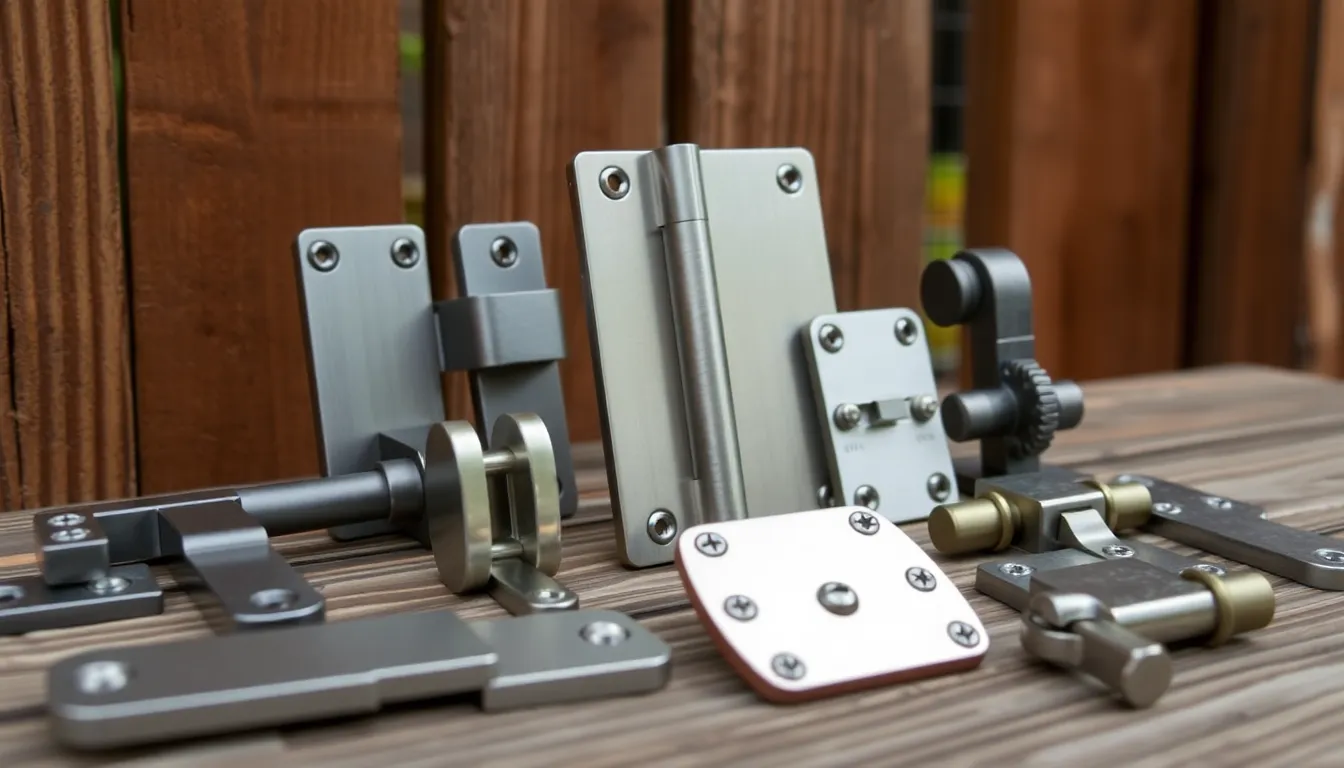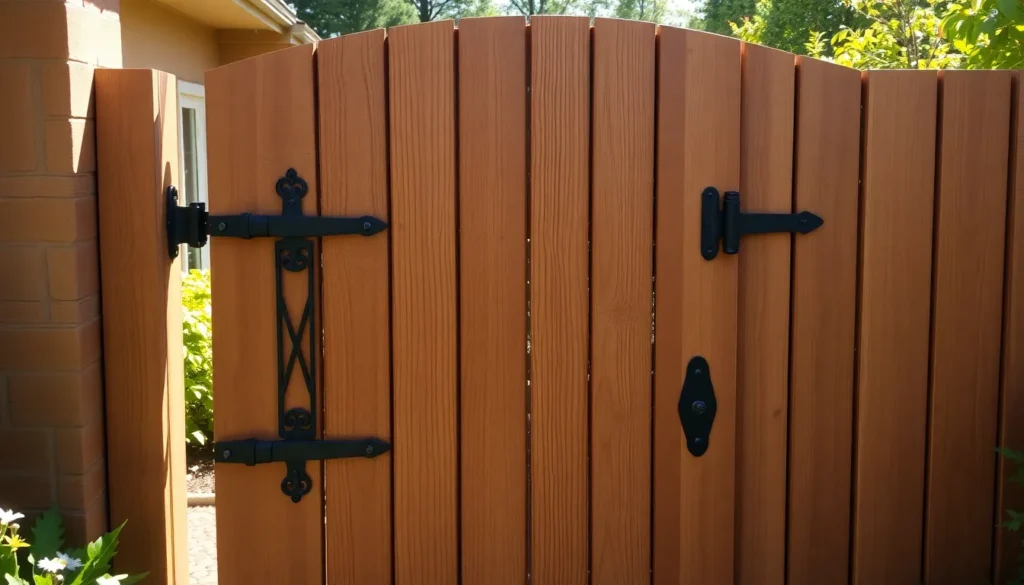Table of Contents
ToggleWhen it comes to wood gates, the hardware is the unsung hero. Imagine a sturdy gate swinging open with ease, welcoming guests while keeping unwanted visitors at bay. The right hardware not only enhances functionality but also adds a touch of charm to any property. Who knew a hinge could be so stylish?
Overview of Wood Gate Hardware
Wood gate hardware is crucial for functionality and design. The right components not only ensure a smooth operation but also enhance the property’s aesthetic.
Types of Wood Gate Hardware
Different types of wood gate hardware serve unique purposes. Hinges come in various styles, such as strap, T-hinge, and butt hinges. Latches provide security and can be simple lever types or more complex locking mechanisms. Additionally, gate stops prevent the gate from swinging too far. Each type contributes to the overall look and effectiveness of a wood gate.
Essential Hardware Components
Essential hardware components play a vital role in gate operation. Hinges enable the gate to swing freely and require durable materials for longevity. Latches secure the gate and can be operated easily for convenience. Frame brackets support the structure and provide stability. By choosing quality hardware, property owners ensure that their wood gates function properly while enhancing curb appeal.
Choosing the Right Wood Gate Hardware

Selecting proper wood gate hardware influences both functionality and appearance. The right choice ensures smooth operation and enhances the property’s overall aesthetics.
Factors to Consider
First, evaluate the gate’s size and weight, as these aspects determine the type of hardware required. Next, consider the climate, since weather resistance plays a crucial role in hardware longevity. Security needs also matter; stronger latches and locks provide better safety. Additionally, ensure the hardware matches the gate’s design style, whether traditional or modern. Lastly, installation ease can save time and effort; simpler designs can facilitate faster setups.
Material Options
Quality materials contribute to the durability of wood gate hardware. Stainless steel is a popular choice for its corrosion resistance and strength. Galvanized steel offers robust performance in harsh weather conditions. For a rustic look, wrought iron delivers elegance while maintaining sturdiness. Additionally, aluminum provides a lightweight alternative, which resists rust and is easy to install. Choosing the right material ultimately enhances the gate’s overall functionality and visual appeal.
Installation Tips for Wood Gate Hardware
Proper installation ensures wood gate hardware operates effectively. Follow these guidelines for a successful setup.
Tools Needed
Essential tools streamline the installation process. Gather a drill for making holes, a screwdriver for securing screws, and a level to ensure all parts align correctly. A measuring tape offers precise measurements, while safety glasses protect eyes during the installation. Pliers help with holding various components, and a saw might be necessary for adjustments to the gate or frame. A hammer is beneficial for driving in harder screws, ensuring everything fits together properly.
Step-by-Step Installation Guide
Start by measuring the gate’s hinge placement, ensuring the gate swings freely. Next, mark the spots for the latches and locks, aligning them with the structure. Drill pilot holes for both hinges and latches. Install hinges first, securing them firmly to the gate and post. Following that, attach the latch mechanism, ensuring it aligns perfectly with the corresponding strike plate. Test the movement of the gate, making any necessary adjustments. Lastly, install the gate stop if required to limit swing. Proper installation guarantees longevity and security for your wood gate hardware.
Maintenance of Wood Gate Hardware
Regular maintenance ensures that wood gate hardware remains functional and visually appealing. Routine inspections help identify signs of wear or damage.
Regular Maintenance Practices
Inspect hinges and latches for rust or corrosion every six months. Clean hardware with soap and water to remove dirt and debris. Lubricate moving parts, such as hinges and latches, using a silicone spray or lithium grease to prevent sticking. Check screws and bolts for tightness at least twice a year. Replace any damaged components immediately to avoid further issues. Finish with a protective sealant on exposed metal to enhance longevity.
Troubleshooting Common Issues
Address squeaking hinges by applying a lubricant or adjusting the installation angle. If a latch fails to catch, check alignment with the strike plate, adjusting as necessary. Ensure screws remain tight; replace any stripped screws promptly. For a gate that sticks, adjust hinges or sand the contact points for smoother operation. When a gate won’t close properly, inspect for sagging or misalignment in the frame. Make necessary adjustments to restore proper function.
Investing in quality wood gate hardware is essential for both functionality and aesthetics. The right components not only ensure smooth operation but also elevate the overall appearance of a property. By carefully selecting hardware based on size, weight, and style, property owners can achieve a perfect balance between security and visual appeal.
Regular maintenance plays a vital role in the longevity of wood gate hardware. By following simple upkeep routines and addressing common issues promptly, one can ensure that the gate remains a dependable and attractive feature for years to come. With the right hardware and care, a wood gate can be both a practical entry point and a stunning addition to any landscape.







